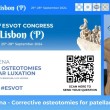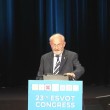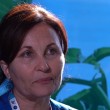
Dr. Eithne J. Comerford MVB PhD CertVR CertSAS PGCertHE DipECVS MRCVS
RCVS specialist in Small Animal Surgery (Orthopaedics)
ECVS specialist in Small Animal Surgery
Senior lecturer in Small Animal Orthopaedics
Leahurst Training Campus, University of Liverpool
I qualified from University College Dublin, Ireland in 1995 with a Bachelor degree in Veterinary Medicine (MVB). My other qualifications are PhD, Royal college certificates in radiology and small animal surgery, post graduate certificate in higher education and the European diploma in small animal surgery. I am currently a Senior Lecturer in small animal orthopaedics at the University of Liverpool.
I graduated from the Faculty of Veterinary Medicine, UCD, Ireland in 1995. From 1995-2006, I worked at the University of Bristol and was awarded my PhD on the pathogenesis of cranial cruciate ligament disease in 2003 and remained there a Lecturer in Small Animal orthopaedics here until October 2006. At that I accepted an offer, for my current post, as Senior Lecturer in Small Animal Orthopaedics at the University of Liverpool in October. In 2009 I was awarded the European Diploma in Small Animal Surgery. My main clinical interests include management of the trauma patient and cranial cruciate ligament disease (CCLD).
G.S-S. You moved to Liverpool in 2006? How are your duties divided between administration, clinical commitments and research? Did you spend the last few years in the clinic or were you able to start up some research, with others or on your own?
E.C. My job is currently 50% clinical work/administration and 50% research. However, this may change as we are undergoing substantial restructuring in our Faculty. I spent approximately 60% in the clinic over the first three years of my appointment obtaining my final credentials for the Dip.ECVS examination and supervising our two Surgical Residents. On the research front, I have been lucky to have had a PhD student over the last three years who has been able to assist me with my research into the pathogenesis of canine cranial cruciate ligament disease. As a member of the musculoskeletal and locomotion research group here at Liverpool, I have also been able to collaborate with basic scientists and am trying to get funding to look at the role of proteoglycans in the cruciate ligament complex.]
G.S-S What particularly interested you in the field of your current research?
E.C. I am particularly interested in the investigation and evidence basis of novel techniques for management of canine CCLD. All aspects of the roles of the extracellular matrix constituents present in the canine cruciate ligament complex interest me. Kinley Smith, my recently finished PhD student, has discovered that the cruciate ligaments of performance dogs, such as the racing greyhound, may have an adaptive, healing response to microinjury, in terms of their production of elastin microfibrils. This may help to explain their fundamental difference in terms of ligament rupture compared to other canine breeds.















